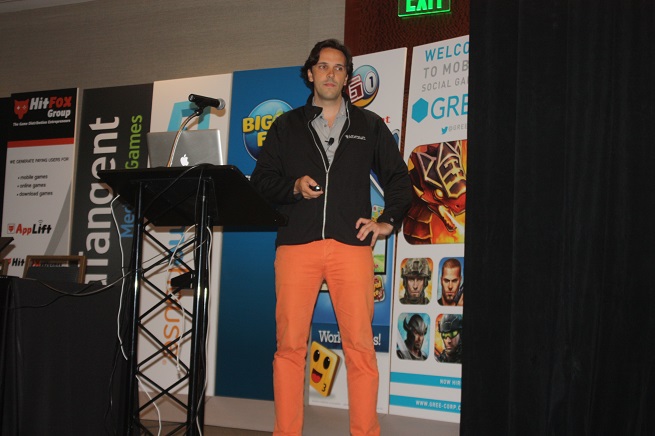SAN FRANCISCO — Publishing is becoming “obsolete.”
So says Will Harbin, the chief executive of Kixeye, one of the most successful new game publishers in the era of digital gaming with titles such as Battle Pirates on platforms such as Facebook. And his advice to younger developers is to bypass publishers and move directly to publishing games on their own on the app stores.
“Don’t depend on anyone but yourself,” said Harbin in a speech today at the Casual Connect game conference. “Take control of your own destiny.”
That advice may be good, but you rarely hear it coming directly from a game publisher. That’s because Harbin pursues that advice himself and is fiercely independent, even as his company gets bigger and bigger.
In the digital era, publishers no longer control retail shelf space and the means of distribution in the way they did with physical games. Although Harbin is a successful publisher with games like Backyard Monsters, Battle Pirates, and War Commander, he doesn’t want game developers coming to him asking him to publish their games. With a staff of a few hundred people, he has more than enough internal developers to make his company’s own games. In other words, over the past four years, he has learned not to depend on others for publishing services.
“Publishers are becoming obsolete in the free-to-play, mobile, and browser games markets,” he said. “To be a game maker these days, you have to be a great game company” making great games.
Developers don’t need the tens of millions of dollars they once did to create new games. It’s possible to publish a game with a small development team. Developers can open their own advertising accounts, create some ads, and experiment with them. You can learn the tasks of dealing with community, acquiring new users, marketing, analyzing customer patterns and feedback, and supporting customers.
“If you can develop your own game, you can market and distribute it, too,” he said. “Why have an overlord like me? What’s the point?”
To do that, you have to master the details about free-to-play business model, publishing on multiple platforms, and making games more accessible. You have to create designs that are informed by community demand and feedback.
“Fail fast, and iterate faster,” he said. “No great game company relies on outside publishing. You have to be able to figure out how to publish yourself.
“Use numbers to figure out where the problems in the game are, but use your intuition to figure out the fun. Let your game design intuition lead you on the path.”
If your cost of lifetime value of a user is higher than your user acquisition costs, then you can spend money on promoting the title, he said. You can start small and not buy a ton of traffic at the outset. But you can experiment with different ways to acquire new players. You can focus on free viral channels such as YouTube, Facebook, Instagram, Twitter, or Tumbler. But don’t be too aggressive about the self-promotion on these networks, Harbin said.
Art style is very important for targeting your audience. If you want to target men who love strategy games, you can’t create cute characters. You have to make them more realistic.
You should “zig when others zag,” he said. “You will never get a hit if you are just copying the leader.” He said you should be technology and platform agnostic so that you can always switch to another platform when the time comes.
VentureBeat's mission is to be a digital town square for technical decision-makers to gain knowledge about transformative enterprise technology and transact. Learn More

